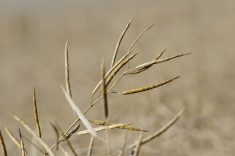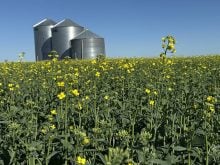A troubling trend is creeping up on global farmers as governments control food production and eliminate crop diversity.
In China, “non-grain” farming has become the target of the Rural Comprehensive Administrative Law Enforcement Brigade, or nongguan, which exercises agricultural administrative penalties and related inspections for the Agriculture and Rural Development ministries.
Rules include no burying of the dead, (as this uses farmland), no fireworks, no burning of fields, waste or firewood. It is forbidden to plant fruits or vegetables in front of farm homes, and trees cannot be taken down that the farmer planted (but the government can remove trees).
Read Also

When farmers vote against their interests
U.S president Donald Trump has left many clues over the years that many of his actions weren’t going to necessarily be in the best interests of American farmers.
It is against the law to sell any livestock or poultry privately, just as it is to plant any plant other than government-promoted crops. In addition, farmers will be charged daily with a new rural tax.
All farmers now must pass a certification course and abide by the new policy. Everything a farmer owns is registered, including cats and dogs. The hours they work and what they do when not working in the field must be logged.
The idea behind the policy is to grow more food in monocultures. The new Turning Forest into Farmland Policy will also strip China of its ability to sequester carbon and host any form of biodiversity as the trees are destroyed.
China already loses 1.7 million acres of farmland per year through degradation, soil erosion, industry and industrial poisoning and urban reach. The current policies will not restore the land and will only increase soil loss and quality — potentially taking China away from the Party’s envisioned food security.
Throughout history, it has been proven that when we try to conquer the land and severely disrupt watersheds, challenging the biodiversity that makes critical events like pollination possible, the opposite of food availability occurs.
Historically, it does not work to use military force to create a robust singular production system.
A case-in-point is Indonesia, where the Food Estate Program was started three years ago.
Enforced by the Ministry of Public Works and Housing, the Ministry of Agriculture and the Ministry of Defence, the idea was to create massive food estates of mega-rice projects.
Over 900 forests have been cleared so far, causing flooding and soil erosion.
While each ministry is busy blaming the other for the failure of the food estates, the farmers’ voice has been silenced. Indonesia’s attempt at food sovereignty failed and inflation increased.
China and Indonesia may seem a world away but we share the same earth and the same sky. There is a real risk in the loss of seed diversity and farmer margins, and in an increase in the use of herbicides, pesticides and commercial fertilizer. We don’t have the privilege of time to watch soil rebuild itself, nor can we continue to pressure Canadian farmers to sequester to cover the mistakes of other nations.
In Canada we have the democratic right to be involved in shaping policy and in saying “no thanks” when it is not in the best interest of the future of agriculture. Canadian farmers can therefore take charge in being world leaders in a healthy and diverse landscape that incorporates all of the possible food production systems complementary to the wellbeing of our society.















